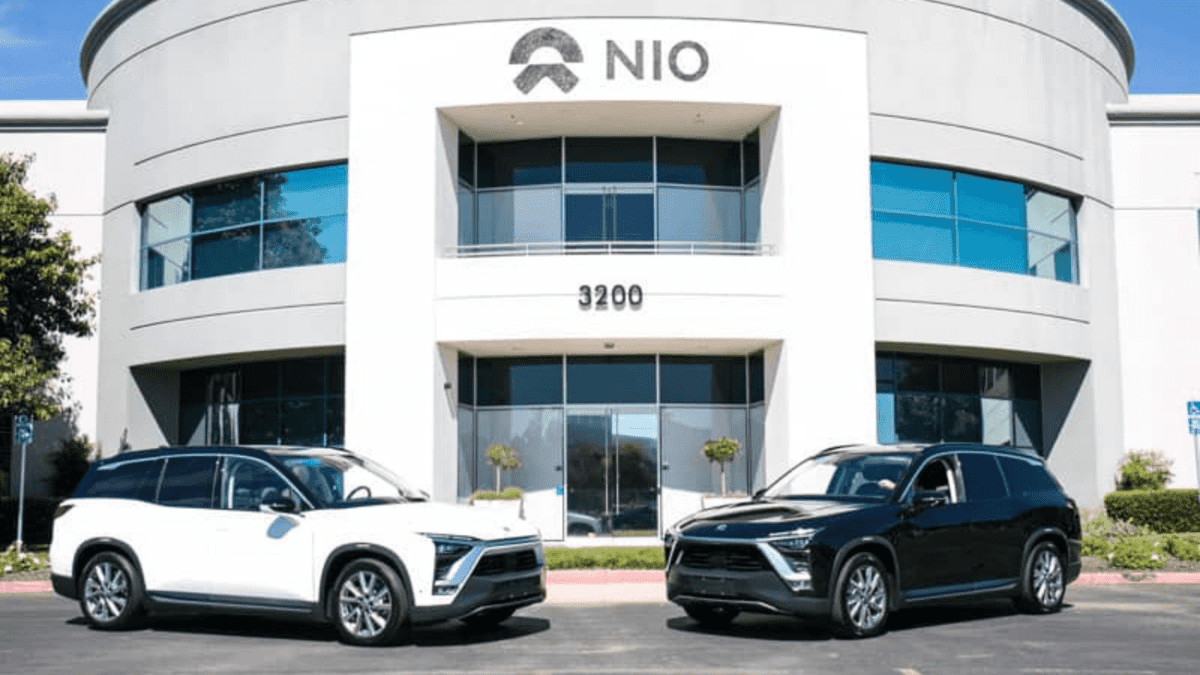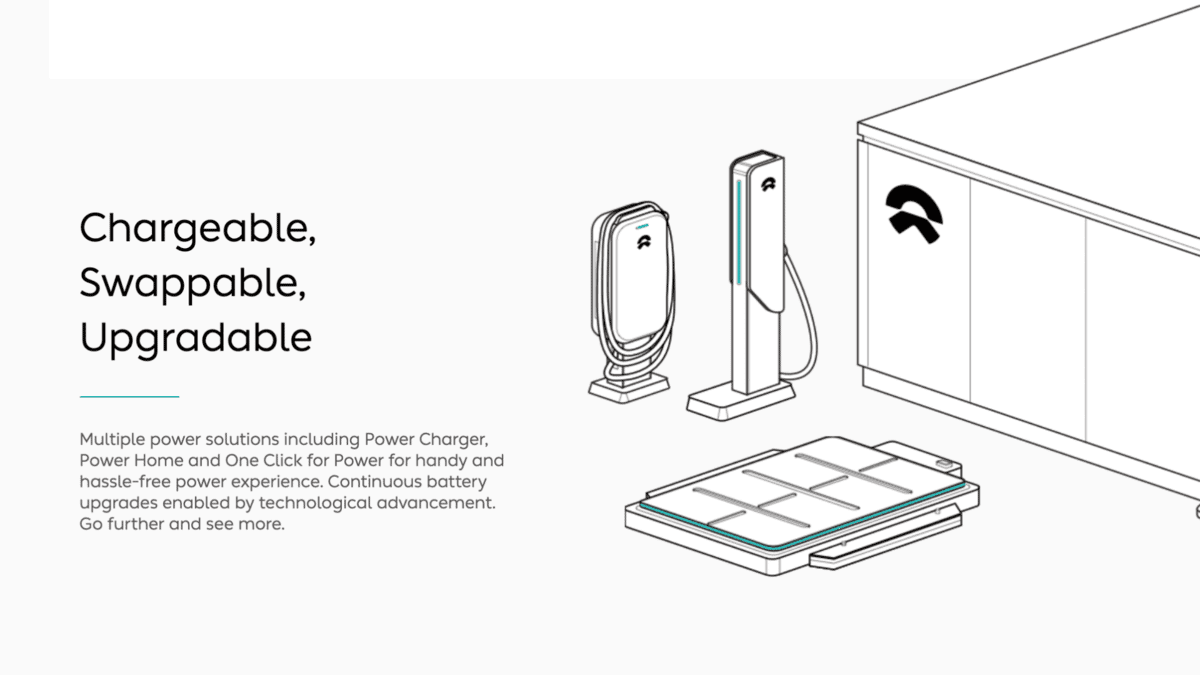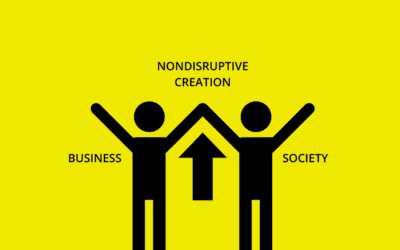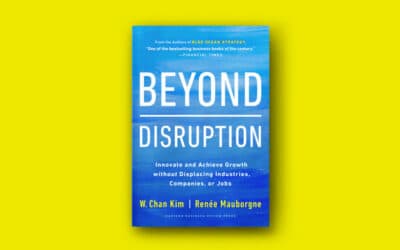Written by Chan Kim and Renée Mauborgne, with Mi Ji, Senior Executive Fellow at the INSEAD Blue Ocean Strategy Institute.
This is a challenging time for many companies. On the one hand, supply chain disruption, labor shortage, raw material and energy price hikes are driving up business costs. On the other, demand is slack due to consumers’ reduced purchasing power and an uncertain global economic outlook. Together these conditions squeeze companies’ profits and cast a shadow on their growth prospects. In this time of difficulty, executives around the world find it more urgent than ever to sharpen their organisations’ innovation strategy to create new markets for growth.
Market creation for growth is not inevitably about technological innovation
Economics has long taught us that R&D and technology advances, as measured by R&D spending and numbers of patents, are the central drivers of innovation and growth. But market creation for growth is not inevitably about technological innovation.
Consider how Comic Relief, a major and distinctive charity based in the UK, created a new market in the deep red ocean of the charity industry where competition was intense and growing, costs were up and donations were down. It did so by redefining the industry problem and engaging everyone to do something funny for charitable giving.
Or consider other classic blue ocean moves by the likes of Starbucks, Yellow Tail and André Rieu. Each turned their respective industry on its head, leapfrogged the competition and created a blue ocean of profitable growth without using any bleeding-edge technology.
A quantum leap in value
Even when technology is involved, it is not the reason that innovative offerings like Google’s search engine, Salesforce platforms and Wikipedia are successful. Such products and services succeed because they offer buyers a leap in value – they are so simple to use, fun and productive that people fall in love with them.
In contrast, inventions like Google Glass and Segway may be qualified as technology innovations. They didn’t, however, offer a quantum leap in value for buyers. Google Glass was considered unattractive, nerdish, expensive; it also raised hugely uncomfortable privacy issues.
Value innovation, not technology innovation, is what launches commercially compelling new markets.
Segway, the two-wheeled self-balancing vehicle that once promised to revolutionise transport, was regarded as dorky, unsafe and hardly useful due to the lack of a complementary ecosystem. Most people simply would not want to pay US$4000-$5000 for a product that left them wondering where to park it, how to take it in a car, whether it could be brought on a bus or a train, and where it could be used – on sidewalks or roads. Neither Google Glass nor Segway was able to create a new market with a mass following.
Value innovation, not technology innovation, is what launches commercially compelling new markets. Understanding this basic fact allows companies to avoid drowning themselves in costly R&D activities without first appreciating what buyers truly value. In fact, when companies anchor their innovative activities to value, they can often break the shackles that a technology-oriented mindset could impose on them and find breakthrough market-creating solutions.

NIO has taken a blue ocean approach to electric car manufacturing.
The NIO case study
Take the example of Chinese upmarket electric car manufacturer NIO. A key issue for electric cars is battery replenishment. Manufacturers have faced the choice between battery charging and battery swapping. Years ago, when battery charging speed was a key problem, tech leaders like Tesla and Renault used to promote battery swapping to increase EV adoption. But soon they abandoned the idea and focused on improving battery technologies instead.
These companies were convinced that continued advancement of battery technologies would make it increasingly possible to “fuel up” EVs fast with superchargers. Moreover, the cost of setting up and running a battery swapping station was higher than that of a charging station. As EVs had yet to achieve mainstream adoption at scale, the swapping model didn’t make much economic sense if the utilisation rate of swapping stations was too low.
In the highly competitive EV market in China, most manufacturers chose the charging model, following Tesla’s lead and betting on fast advancement of battery technologies. The growth and development of the EV market appeared to be conditioned by how rapidly the technological frontier could move forward.
Pulling in new users
NIO, however, took a different approach. Noticing that EV’s adoption hurdles not only involved battery charging time, but also users’ concerns about battery degradation and fast loss of vehicle resale value, NIO launched a ‘Battery as a Service’ (BaaS) plan in August 2020.
Under this plan, first owners of a NIO EV may purchase the car with a 25 percent discount on average and rent the battery on a monthly plan. In return, NIO provides free and limitless service of battery swaps and upgrades during the car’s life cycle. The monthly battery rental fee was economically assessed to rapidly attract and pull EV buyers.
While it takes around 30 minutes to recharge and replenish a battery for a Tesla Model 3 from 18 to 60 percent, it takes about 3 minutes to swap in a fully charged battery at a NIO swap station. When car owners just want to recharge their car batteries on the way instead of making a swap, they can also do that at one of NIO’s swap or supercharging stations.
On top of these benefits, car owners always have well-maintained batteries to power their cars, which minimises battery-related safety hazards. They can also get a battery upgrade when needed, thereby enhancing the car’s resale value.
By making the car price more accessible, and the user experience more productive and hassle-free, NIO’s BaaS model lowered the adoption hurdles for potential buyers, resulting in rapid growth of sales revenue. As a relatively new start-up, NIO quickly rose and made it to the top 10 list of new energy car producers in China in 2020. In 2021 it became the No. 1 player in the premium EV market, commanding over 40 percent of market share.

NIO car owners always have well-maintained batteries to power their cars.
Understanding buyer value
This success has made it economically more justifiable and scalable for NIO to build an extensive network of power swap stations to keep up with the growing customer base. NIO has opened 900 battery swap stations and completed over 7.6 million battery swaps for its customers. The company plans to have a total of 5000 stations up and running by 2025.
NIO’s international expansion has also begun. In Norway, the company’s entry point in Europe, 92 percent of NIO’s new customers chose the BaaS model. NIO targets to build 1000 swap stations outside China before 2025.
NIO’s business is undoubtedly high-tech. Battery swap at NIO is fully automated, which is enabled by AI and cloud technology, making NIO’s battery swap station model economically more attractive by lowering its cost of operations. But NIO’s innovative business model was not driven by inventive technology. Instead it was inspired by and premised upon a deep understanding of buyer value in purchasing an EV: fast and convenient power replenishment, well-maintained and reliable batteries, as well as good resale value of the vehicle.
Value innovation allows NIO to stand out from the competition and create an expanding blue ocean. Prior to NIO’s move, battery charging was the predominant model as nearly everyone in the industry thought that was the way to go. As NIO’s BaaS became popular, third-party companies began to enter the market and offer battery swap service to other car brands, further expanding the blue ocean together with NIO.
Staying smart and efficient
As economy of scale is being achieved, more socioeconomic advantages of the battery swap model are manifested and recognised, such as easy recycling, less peak-time charging and less load for the power grid, all of which are in line with China’s new energy development strategy. As a result, the battery swap model has received policy support from the government and embarked upon fast-track development.
Recently, the Chinese government has stepped up efforts to set universal standards for batteries and platforms used for power swaps, which, if fully implemented, will likely increase economies of scale of the swap model and accelerate the mass adoption of EVs.
Through value innovation, NIO not only created new growth for itself, but also offered new choices and opportunities for the entire industry, whose growth would otherwise have been constrained by the limits of battery technologies of the time. Such value-driven innovation practice is particularly relevant to companies looking for new growth opportunities today.
With limited resources at hand, companies need to stay smart and efficient when it comes to investing in innovation. If technologies are involved, they should enable and facilitate the delivery of key buyer value elements, instead of making products or services too futuristic, esoteric or complicated for customers to adopt.
Moreover, as the borderless world we once nearly took for granted becomes fragmented and divided due to major geopolitical shakeups, companies need to prepare for a scenario where they have less room to scale a heavily invested tech product globally to achieve profitable growth. They must innovate right where they are and create growth by multiplying the demand potential of the local market. Innovation needs to be nimbler, cost light and more local- or regional-value driven.
Is your innovation strategy anchored to value? Are you orienting your innovation activities towards unlocking new buyer demand, or are you just chasing up avant-garde technologies? Find more discussions about the distinction between value innovation and technology innovation in Blue Ocean Shift.
First published in INSEAD Knowledge, May 18 2022

















